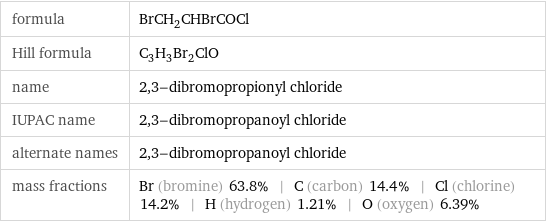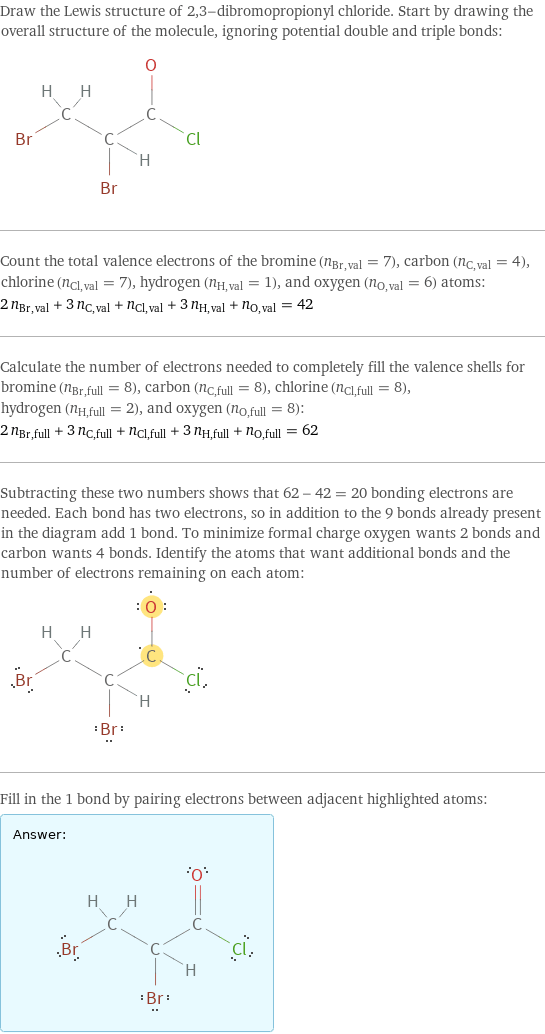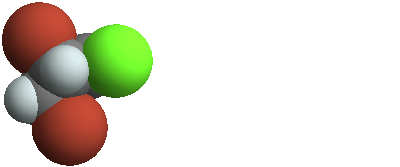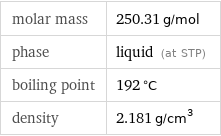Input interpretation

2, 3-dibromopropionyl chloride
Chemical names and formulas

formula | BrCH_2CHBrCOCl Hill formula | C_3H_3Br_2ClO name | 2, 3-dibromopropionyl chloride IUPAC name | 2, 3-dibromopropanoyl chloride alternate names | 2, 3-dibromopropanoyl chloride mass fractions | Br (bromine) 63.8% | C (carbon) 14.4% | Cl (chlorine) 14.2% | H (hydrogen) 1.21% | O (oxygen) 6.39%
Lewis structure

Draw the Lewis structure of 2, 3-dibromopropionyl chloride. Start by drawing the overall structure of the molecule, ignoring potential double and triple bonds: Count the total valence electrons of the bromine (n_Br, val = 7), carbon (n_C, val = 4), chlorine (n_Cl, val = 7), hydrogen (n_H, val = 1), and oxygen (n_O, val = 6) atoms: 2 n_Br, val + 3 n_C, val + n_Cl, val + 3 n_H, val + n_O, val = 42 Calculate the number of electrons needed to completely fill the valence shells for bromine (n_Br, full = 8), carbon (n_C, full = 8), chlorine (n_Cl, full = 8), hydrogen (n_H, full = 2), and oxygen (n_O, full = 8): 2 n_Br, full + 3 n_C, full + n_Cl, full + 3 n_H, full + n_O, full = 62 Subtracting these two numbers shows that 62 - 42 = 20 bonding electrons are needed. Each bond has two electrons, so in addition to the 9 bonds already present in the diagram add 1 bond. To minimize formal charge oxygen wants 2 bonds and carbon wants 4 bonds. Identify the atoms that want additional bonds and the number of electrons remaining on each atom: Fill in the 1 bond by pairing electrons between adjacent highlighted atoms: Answer: | |
3D structure

3D structure
Basic properties

molar mass | 250.31 g/mol phase | liquid (at STP) boiling point | 192 °C density | 2.181 g/cm^3
Units

Liquid properties (at STP)

density | 2.181 g/cm^3 refractive index | 1.542
Units

Chemical identifiers

CAS number | 18791-02-1 Beilstein number | 1749801 PubChem CID number | 86790 PubChem SID number | 24858090 SMILES identifier | C(C(C(=O)Cl)Br)Br InChI identifier | InChI=1/C3H3Br2ClO/c4-1-2(5)3(6)7/h2H, 1H2 RTECS number | UG6657500 MDL number | MFCD00000712
Safety properties

flash point | 66.67 °C